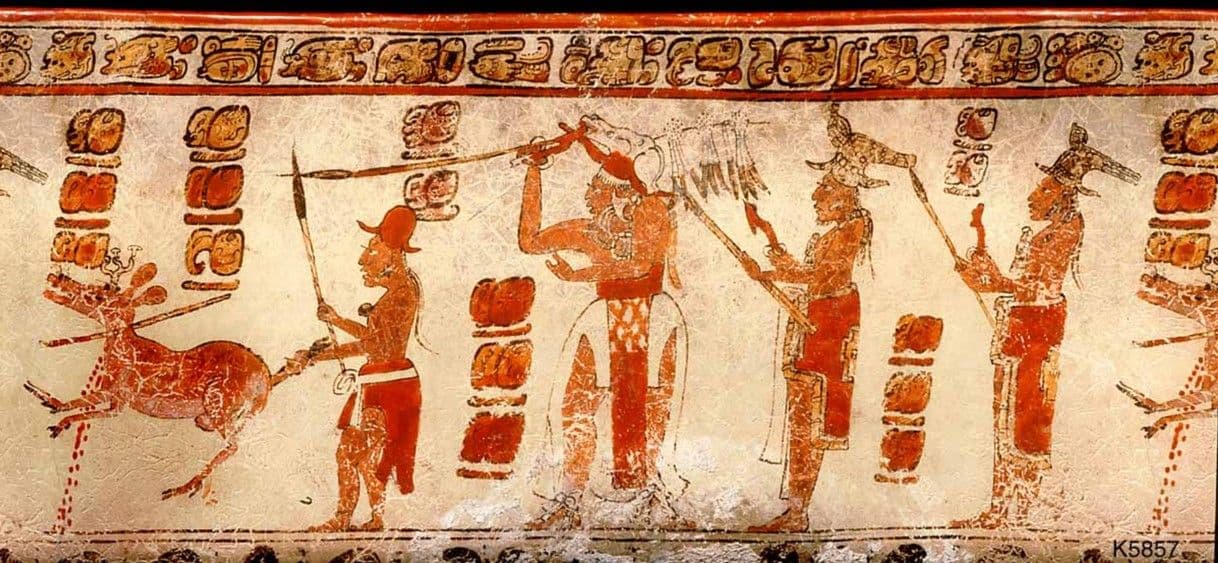Evidence #180 | April 5, 2021
Book of Mormon Evidence: Javelins
Post contributed by
Scripture Central

Abstract
On three different occasions, the Book of Mormon mentions javelins. These light-weight spears, which could be used for stabbing or throwing, were also known in ancient Mesoamerica.Javelins in the Book of Mormon
The javelin is a light spear with a sharp point that can be thrown, but also used to stab when needed. There are only three references to javelins in the Book of Mormon. It was one of the sharp-pointed weapons used by the early Nephites during the time of Jarom, the son of Enos (Jarom 1:8). Several hundred years later, Teancum used a javelin to kill both Amalickiah and his brother Ammoron. Concerning Amalickiah’s death, the text reports that Teancum “put a javelin” in his heart (Alma 51:34), yet when describing Ammoron’s assassination, Teancum “cast a javelin at him” (Alma 62:36), suggesting, perhaps, that the weapon was used in both a thrusting and throwing capacity on these respective occasions.
Although it has been claimed that the Book of Mormon’s references to pre-Columbian javelins are anachronistic,1 historical and artistic evidence from Mesoamerica suggests otherwise.
The Javelin in Pre-Columbian Art
Spears and various kinds of spear-like weapons were used throughout Mesoamerican history. A javelin, in order to be cast or thrown, would need to be relatively light and have a smaller point to be effective as a projectile weapon. Some weapons shown in pre-Columbian art have smaller points and could have been used as javelins.2
In reference to the early Classic period among the Maya, Ross Hassig has noted that “points were not excessively large at this time, so that spears could have been used as javelins.”3 As another scholar observes, “all spears are thought to have functioned to some degree as javelins as well.”4 On murals and stone monuments,
Some spears show no points, or only very small ones, and have no trailing decoration behind the point that might have hindered its flight, which indicates that they could have been thrown, unlike the heavier thrusting spears. Also, the spears are held in an overhand way that suggests they may have been intended to be thrown as javelins.5
Atlatl Darts as Javelins
In addition to the existence of javelins from early times, the atlatl dart or lance may also fit the description of javelin.6 The fisga was an atlatl that propelled a short spear or lance.7 These were quite deadly and sometimes had more than one pointed tip at its end. Modern experiments with the atlatl suggest that it had an effective range of about sixty meters.8 Bernal Diaz, one of the Spanish soldiers who fought against the Aztecs, wrote that “their two-pronged javelins which they hurled with a spear thrower” could pierce armor.9
The atlatl is represented in art at Teotihuacan and at the Classic site of El Tajin, and archaeological examples have been recovered from Classic Maya sites as well.10 Points believed to have been used for atlatl darts have been recovered from Mesoamerican sites as early as 4000 BC.11
Conclusion
Available evidence from historical sources on Mesoamerican warfare, as well as martial representations from pre-Columbian art, are consistent with the textual information about javelins found in the Book of Mormon. Several weapons fit the criteria of a sharp, light spear that could be cast by hand or by a spear thrower to pierce an enemy at close range, just as the Book of Mormon describes.
Scripture Central, “What Does Archaeology Reveal about Warfare During Early Nephite Times? (Jarom 1:7–8),” KnoWhy 328 (June 19, 2017).
Brant A. Gardner, Second Witness: Analytical and Contextual Commentary on the Book of Mormon, 6 vols. (Salt Lake City, UT: Kofford Books, 2007), 3:33.
John L. Sorenson, Images of Ancient America: Visualizing Book of Mormon Life (Provo, UT: Research Press, 1998), 130–131.
William J. Hamblin, “The Bow and Arrow in the Book of Mormon,” in Warfare in the Book of Mormon, ed. Stephen D. Ricks and William J. Hamblin (Salt Lake City, UT: Deseret Book, 1990), 365–399.
- 1. James White, Letters to a Mormon Elder (Southbridge, MA: Crowne Publications, 1990), 168; Thomas Key, The Book of Mormon in the Light of Science, Fifteenth Edition (Marlow, OK: Utah Missions, 1997), 69.
- 2. John L. Sorenson, Images of Ancient America: Visualizing Book of Mormon Life (Provo, UT: Research Press, 1998), 130–131.
- 3. Ross Hassig, War and Society in Ancient Mesoamerica (Berkeley, CA: University of California Press, 1992), 71.
- 4. Prudence M. Rice, Don S. Rice, Timothy Pugh, and Romulo Sanchez Polo, “Defensive Architecture and the Context of Warfare at Zacpeten,” in The Kowoj: identity, Migration, and Geopolitics in Late Postclassic Peten, Guatemala, ed. Prudence M. Rice and Don S. Rice (Boulder, CO: University Press of Colorado, 2009), 131.
- 5. Hassig, War and Society in Ancient Mesoamerica, 217n.24.
- 6. Aztec examples of the atlatl light spear or dart averaged about .6 meters long, but throughout Mesoamerican history the length likely varied. See Ross Hassig, Aztec Warfare: Imperial Expansion and Political Control, (Norman, OK: University of Oklahoma Press, 1988), 76.
- 7. Diego Duran, The History of the Indies of New Spain, trans. Doris Heyden (Norman, OK: University of Oklahoma Press, 1994), 34, 38.
- 8. Hassig, War and Society in Ancient Mesoamerica, 137.
- 9. Bernal Diaz, The Conquest of New Spain, ed. J.M. Cohen (London: Penguin Books, 1963), 180. He repeatedly refers to this weapon as a javelin. See Diaz, 15–152, 228, 288–289, 341, 355–356, 379, 382, 404.
- 10. Hassig, Aztec Warfare: Imperial Expansion and Political Control, 75–79.
- 11. Hassig, War and Society in Ancient Mesoamerica, 13.